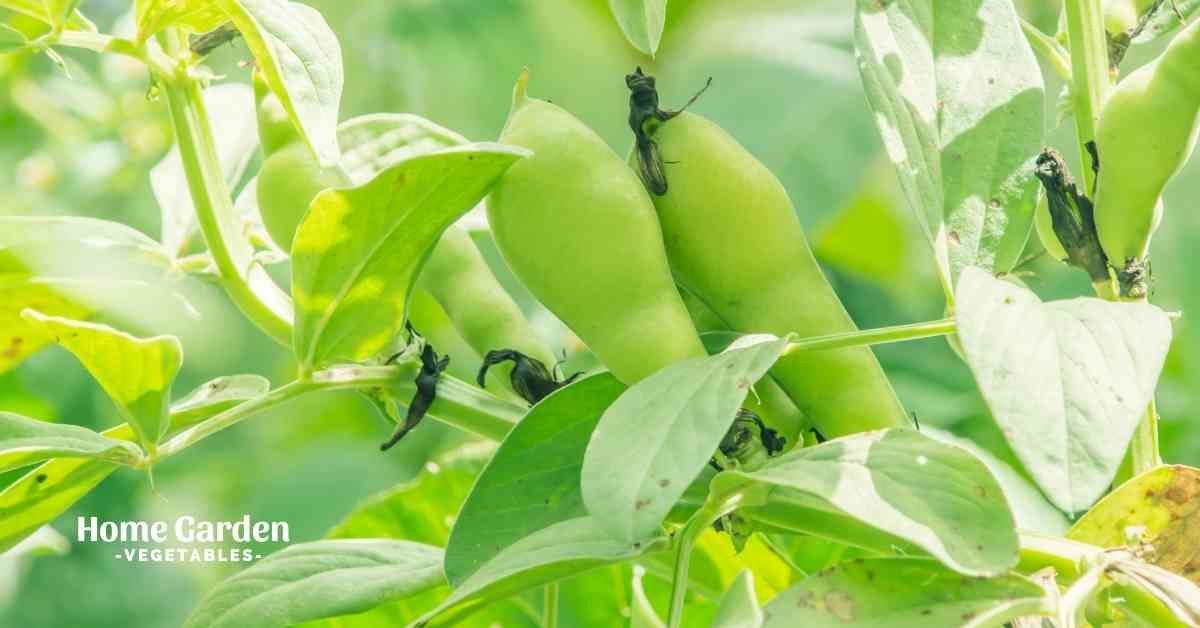Broad bean leaves are one of the most popular vegetables in many parts of the world. They are known for their nutritional value and their delicious taste. Broad bean leaves are a good source of vitamins A, C, and K. They are also a good source of fiber and protein. Broad bean leaves can be eaten raw or cooked. They can be used in salads, soups, stews, and stir-fries.
There are several possible culprits regarding what is eating my broad bean leaves. It could be slugs, snails, caterpillars, or even rabbits. The best way to determine what is eating my broad bean leaves is to set up a simple experiment.
Reader Poll: What online courses would interest you?
Place some leaves in a container with a lid and check back in a few hours. If the leaves are gone, you know you have an issue with one of these pests. If the leaves are still there, you can rule out these pests and look for other causes.
pea and bean weevil infestations
One of the most severe pests of peas and beans is the pea and bean weevil (PBW). This insect is a small, black beetle that bores into the pods of these legumes, causing them to become deformed and discolored. The weevil larvae feed on the beans or peas, causing further damage.
PBW infestations can decimate a crop, and the insects are difficult to control once they become established. Farmers typically use chemical insecticides to kill the beetles, which can be costly and harmful to the environment. Some farmers are experimenting with trap crops, which are plants that are more attractive to the PBW than the main crop, to lure the insects away from the peas and beans.
Subscribe to our newsletter!
Do slugs eat broad bean plants?
Slugs are a common garden pest that can cause severe damage to broad bean plants. These slimy creatures feed on the leaves and stems of the plant and can quickly destroy a crop. While there are several ways to control slugs in the garden, removing their food source is the best way to prevent them from eating your plants.
This can be done by regularly hoeing the soil around the plants and removing any dead leaves or stems. You can also try using a physical barrier such as a piece of cloth or chicken wire around the plants.
What animal eats broad beans?
Broad beans are a legume popular in many parts of the world—often used in soups, stews, and salads. Many people enjoy them, but there is one animal they especially like to eat. It’s a rabbit.
Rabbits are known for their love of vegetables, and broad beans are no exception. They are one of the rabbit’s favorite foods. If you have pet rabbits, you may have noticed that they are crazy about broad beans. They devour them eagerly and will probably ask for more.
While rabbits are the most well-known animal that eats broad beans, other animals also enjoy them. These include mice, rats, and squirrels. If you have any of these animals in your home, you may want to be careful where you store your broad beans. Otherwise, you may find that they mysteriously disappear!
What is eating my bean plants at night?
There are many potential culprits for finding out what is eating your bean plants at night. Some typical suspects include rabbits, deer, rodents, and insects. Each of these animals has a different feeding method, so it is important to look for signs of each type of damage to identify the culprit.
For example, if you find that your plants have been nibbled on at the tips, a rabbit is likely the culprit. However, if you find that your plants have been chewed on at the base, a deer is more likely to be the culprit. Insects, such as caterpillars can also cause damage to plants, but their damage is typically more random and less focused.
If you suspect an insect is a culprit, you may want to inspect your plants for signs of eggs or larvae. Rodents, such as mice and voles, can also cause damage to plants, but their damage is typically more focused on the roots and underground stems. If you suspect a rodent is a culprit, you may want to look for signs of burrowing or tunneling around the base of your plants.
What pests eat broad beans?
Broad beans are a tasty and nutritious legume that can be enjoyed cooked or raw. Unfortunately, they are also a favorite food of many pests, including aphids, beetles, and caterpillars. These pests can quickly ruin a crop of broad beans, causing significant financial losses for farmers. To protect their crops, farmers must be vigilant in monitoring pests and taking steps to control them.
How do you protect broad beans?
There are a few different ways to protect broad beans from pests. One way is to grow them in a greenhouse or polytunnel. This will protect the plants from most weather conditions and problems. Another way is to grow them in enclosed spaces such as cages or netting. This will deter birds and other animals from eating the beans. Finally, you can use pesticides to keep pests away from the plants.
Conclusion
To protect your broad beans, you need to start by planting them in well-drained soil in a sunny location. You also need to water them regularly and fertilize them every few weeks. Once the plants begin to produce flowers, you can protect them by using netting or a cage to keep the pests away.

